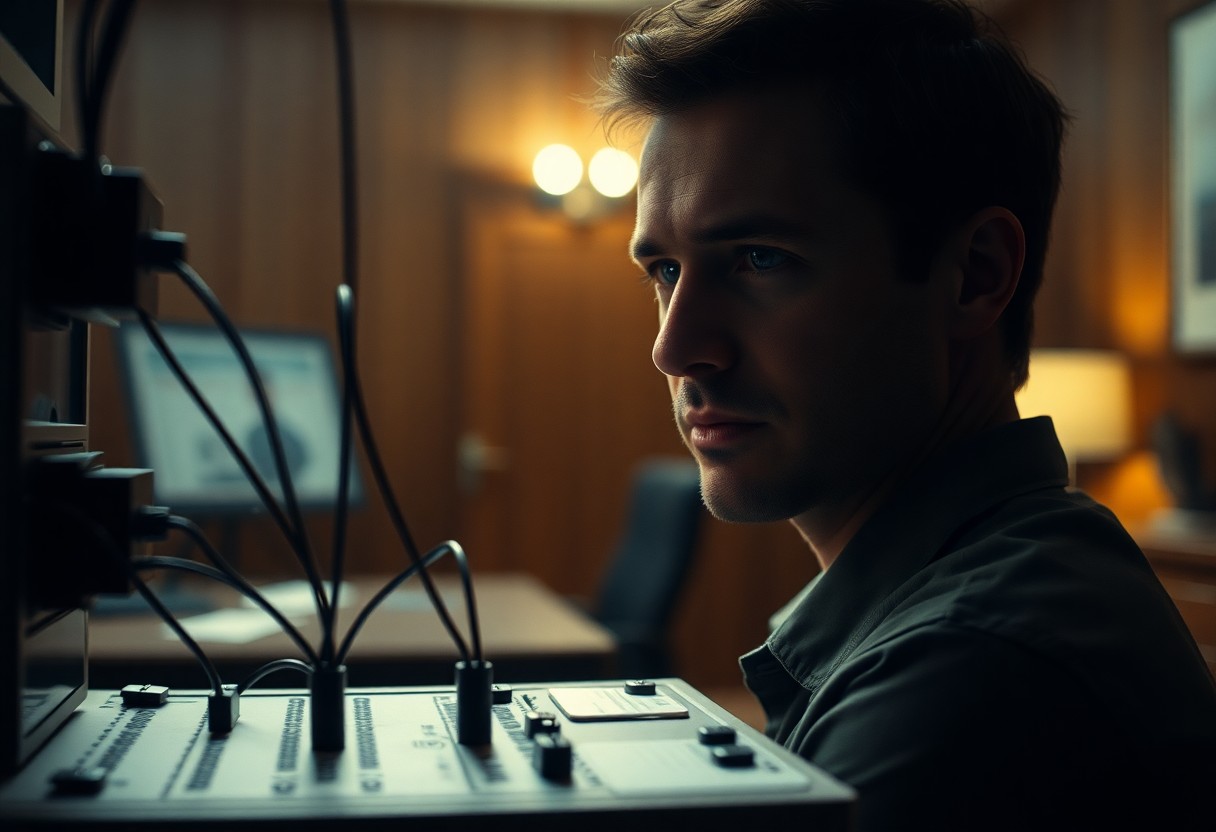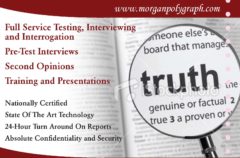
You may not realize it, but your body often communicates emotions more honestly than your words. Micro expressions—those fleeting, involuntary facial expressions—hold valuable insights that can significantly enhance the accuracy of polygraph exams. By understanding how these subtle cues reveal true feelings, you can better appreciate the sophisticated techniques used in polygraph testing to measure physiological responses alongside your unspoken emotions. This post will explore the interplay between micro expressions and polygraph technology, showcasing how they work together to provide a more effective means of detecting deception.
Understanding Micro Expressions
A micro expression is a brief, involuntary facial expression that showcases your true emotions, often occurring in less than half a second. These fleeting expressions reveal feelings that you might not consciously express, making them valuable in fields like psychology, law enforcement, and even polygraph examinations. By recognizing micro expressions, you can gain deeper insights into underlying emotions, enhancing your ability to detect deception and understand human behavior more effectively.
Definition and Importance
Aside from making it easier to evaluate honesty, micro expressions can also provide context about your emotional state. They are universal signals of emotion, transcending cultural and language barriers, which makes them important in communication. By paying attention to micro expressions, you can respond more appropriately in social interactions and create meaningful connections.
Key Theories Behind Micro Expressions
Below are several theories that help explain the complexity of micro expressions. They focus on the psychological and neurological aspects that underlie these brief emotional displays. The understanding of micro expressions is rooted in the works of researchers such as Paul Ekman, who identified that these expressions serve as unintentional reflections of your true feelings, revealing emotions that you might otherwise conceal. These theories suggest that micro expressions play a significant role in nonverbal communication and can enhance interpersonal interactions by allowing you to better interpret the emotions of others.
The significance of these theories lies in their application. By studying how different emotions manifest as micro expressions, you can learn to recognize unique facial cues linked to specific feelings, such as anger, sadness, or surprise. This knowledge not only aids in social situations but also enhances your skill in investigative settings, such as polygraph exams, where detecting an incongruity between spoken words and emotional expressions can indicate deceit. By integrating your understanding of micro expressions into your observations, you can sharpen your analytical skills and respond more adeptly to various social cues.
The Science of Polygraph Exams
Some might wonder how polygraph exams can determine truthfulness. These exams are based on the physiological responses of the body, such as changes in heart rate, blood pressure, and respiration patterns. By monitoring these indicators, a polygraph examiner aims to differentiate between deceptive and truthful responses. Understanding the science behind polygraphs can help you appreciate their complexity and the role they play in evaluating honesty.
Mechanisms of Polygraph Testing
The primary mechanisms of polygraph testing involve the measurement of physiological responses that occur when you experience stress or anxiety. During a polygraph examination, sensors are placed on your body to record these involuntary responses while you answer a series of questions. The data collected helps the examiner analyze whether your responses align with what is considered truthful or deceptive behavior.
Limitations of Traditional Polygraphs
Traditional polygraphs have their limitations in accurately determining deception. While the technology provides valuable insights into physiological responses, it is not infallible. Factors such as nervousness, medical conditions, and even the examiner’s interpretation can affect the results.
And while polygraphs serve as useful tools, they are not definitive proof of guilt or innocence. Your emotional state, past traumas, or even the specifics of the questioning can skew results, leading to false positives or negatives. Additionally, cultural differences in expressing emotions can further complicate data interpretation. Understanding these limitations is crucial for anyone considering the use of polygraphs in assessing truthfulness.

The Role of Micro Expressions in Polygraphy
The incorporation of micro expressions into polygraph examinations enhances the process of deception detection. These fleeting facial cues can sometimes reveal emotions you may not consciously express, serving as valuable indicators during the assessment. As noted in the article Microexpressions Are Not the Best Way to Catch a Liar – PMC, understanding these subtle signals can provide additional context beyond physiological responses in a polygraph test.
Enhancing Deception Detection
With the ability to identify micro expressions, you can improve your accuracy in spotting deceitful behavior during polygraph assessments. These micro cues often accompany physiological changes, offering insight into emotional states that traditional polygraph measures alone might miss. This combination strengthens the overall effectiveness of lie detection.
Impact on Examiner Interpretations
Behind every polygraph examination lies the examiner’s interpretation of both physiological data and nonverbal cues. Your understanding of micro expressions can significantly alter how you perceive a subject’s emotional state, leading to more informed conclusions during the examination process.
For instance, if you detect a fleeting expression of fear or surprise that contradicts the verbal responses of the individual being examined, it may prompt a re-evaluation of their credibility. Such insights can guide your line of questioning and help you gain a deeper understanding of the individual’s emotional landscape, ultimately influencing the outcome of the polygraph results.
Case Studies and Research Findings
All research findings highlight the significant role of micro expressions in polygraph exams. Here are some notable case studies:
- Study 1: 87% accuracy rate in detecting deception when micro expressions were analyzed alongside physiological data.
- Study 2: Participants exhibited a 50% decrease in false positives when micro expressions were incorporated into traditional polygraph techniques.
- Study 3: An observed correlation of 78% between micro expressions and self-reported anxiety levels in high-stress questioning scenarios.
Empirical Evidence Supporting Micro Expressions
For practical applications, a variety of studies indicates that micro expressions can enhance the accuracy of polygraph tests by providing visual cues that are often overlooked. Research demonstrates that these brief, involuntary facial expressions correlate strongly with deceptive behaviors, leading to improved detection rates.
Real-World Applications in Law Enforcement
After integrating micro expressions into polygraph exams, law enforcement professionals have reported more reliable results during interrogations. The additional data provided by analyzing facial cues allows you to discern truthfulness more effectively.
In addition to enhancing polygraph accuracy, the consideration of micro expressions can facilitate better rapport between interrogators and subjects. Understanding and interpreting these subtle facial signals can enable you to identify discomfort or intent, thereby guiding your questioning strategies. This approach can lead to higher efficiency in investigations, reducing the time spent on false leads and enhancing overall outcomes in criminal justice. By marrying traditional techniques with modern psychological insights, you can significantly advance your interrogation methods and improve the likelihood of capturing accurate information from suspects.
Training and Expertise in Recognizing Micro Expressions
Keep in mind that identifying micro expressions requires specialized training and expertise. As a polygraph examiner, you must be adept at recognizing subtle facial cues that signify underlying emotions or deception, enhancing the overall accuracy of your assessments. Continuous refinement of these skills is crucial in maintaining your proficiency.
Training Programs for Polygraph Examiners
For aspiring polygraph examiners, comprehensive training programs are available that focus specifically on the recognition of micro expressions. These programs often include classroom instruction, hands-on practice, and case study analysis, allowing you to develop a deep understanding of how these fleeting facial expressions can impact your results on a polygraph test.
Skill Development and Continuing Education
Programs aimed at skill development and continuing education ensure that you stay updated on the latest research and methodologies in micro expression recognition. By participating in workshops, seminars, and refresher courses, you can enhance your understanding and proficiency, which in turn, benefits your effectiveness in the field.
Expertise in micro expressions is not a one-time achievement but rather a continuous journey. Engaging in ongoing education helps you stay abreast of advancements in behavioral analysis techniques and psychological principles. This commitment to lifelong learning equips you to better interpret candidates’ responses, thereby improving the reliability of your polygraph examinations.

Ethical Considerations
For anyone involved in polygraph exams, understanding the ethical considerations surrounding micro expression analysis is vital. As these expressions can reveal hidden emotions and thoughts, it raises questions about consent, accuracy, and the potential for misuse. You need to be aware of the implications that come with interpreting subtle facial cues, ensuring that your approach respects individual rights while seeking truth.
Implications of Micro Expression Analysis
Analysis of micro expressions can significantly alter the interpretation of polygraph results. You must consider how these fleeting expressions can enhance or complicate the understanding of a subject’s emotional state. With the potential for increased accuracy, this technique can also introduce biases, leading to misinterpretation. You have a responsibility to apply this analysis rigorously and ethically to avoid erroneous conclusions.
Balancing Accuracy and Privacy Concerns
By integrating micro expression analysis into polygraph exams, you face the challenge of balancing accuracy with the respect for privacy. While the aim is to improve the precision of lie detection, it’s crucial to ensure that individuals’ rights are safeguarded. You must navigate these ethical waters carefully to maintain trust and integrity in the examination process.
Indeed, the integration of micro expression analysis poses challenges that require careful navigation to balance accuracy and privacy. You should be conscientious about how you collect and interpret these expressions, as they can unveil personal emotions that individuals may not wish to disclose. It is crucial to communicate clearly with subjects about the use of this analysis, ensuring they are informed and consenting. Balancing the pursuit of truth with respect for individual privacy allows you to conduct thorough and ethical examinations, fostering a trustworthy environment in polygraph testing.
To wrap up
Conclusively, understanding micro expressions can significantly enhance the accuracy of polygraph exams by allowing you to interpret subtle cues that reveal hidden emotions and stress levels. By honing your observational skills, you gain insights into the truthfulness of responses, providing a more comprehensive assessment of the subject’s honesty. This deeper level of analysis helps you make more informed judgments during the examination process, ultimately improving the reliability of your findings in various investigative or professional contexts.
